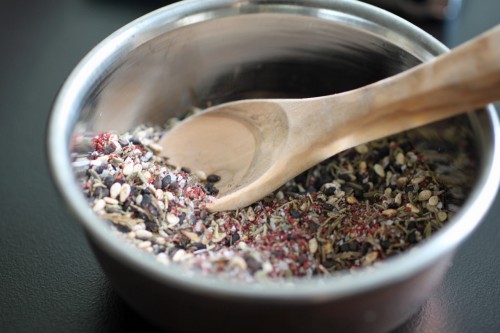Arabic Coffee Panna Cotta
Panna cotta is one of my all-time favorite desserts to serve when I’m having people over. It’s incredibly elegant, and, though it sounds fancy, shamefully easy to make (what your guests don’t know, won’t…). It’s one of those do-ahead-and-forget-about-it dishes that always comes out rich, creamy, and crowd-pleasing. I made this a few years ago for a massive Thanksgiving feast we had. The night before, I was struggling for time and a delicious dessert. I quickly whipped up the panna cotta mixture, poured it into champagne flutes, and was all set!
If you’ve ever had a cup of Arabic or Turkish coffee, that slightly menthol taste comes from cardamom. I grew up drinking coffee that was steeped with both cardamom and cinnamon, a tradition that’s found throughout the Middle East, North Africa and South Asia (check out this recipe on the Republic of Brown!). To me, the combination of cardamom and coffee flavors is distinctively beautiful. In some versions, saffron and clove are added, but I kept it a bit simple here. Feel free to experiment.
What’s nice about panna cotta is that it requires zero baking. Simply heat up the liquid, infuse it with flavors, and use gelatin to work its magic while it cools in the fridge. Here, the heavy cream takes on the coffee, vanilla bean (the lovely specks!), cardamom, and cinnamon flavors. I don’t like mine super sweet, so taste and add more sugar if you need. A quick chill, some chocolate espresso beans (I’ve also used tasty amaretti cookies) for garnish, and that’s it…simple, luscious, decadent. Enjoy!
Ingredients
Serves 4 to 6
2 cups heavy cream
½ cup espresso or very strong coffee
½ vanilla bean, split and scraped
3 cardamom pods, split open w/seeds
1 cinnamon stick
¼ cup sugar
¾ envelope gelatin powder
chocolate-covered espresso beans, crushed (for garnish)
Procedure
In a medium saucepan over medium heat, bring heavy cream, coffee, vanilla bean, cardamom, cinnamon, and sugar up to a boil and immediately turn off the heat. (Be careful that it doesn’t boil over.) Cover and let steep for 5 minutes.
In a small bowl, ladle some of the heavy cream mixture. Add the gelatin powder, and whisk to dissolve completely. Pour the mixture back into the pot, and whisk to ensure even distribution. Strain mixture to remove whole spices and any leftover gelatin and pour into ramekins, espresso cups, or little pots de crème . Cover with plastic wrap and refrigerate for a minimum of 5 hours.
Serve chilled with crushed espresso beans on top.




























